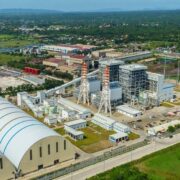Wild, unstudied landscape evokes nostalgia in this Dumaguete resort
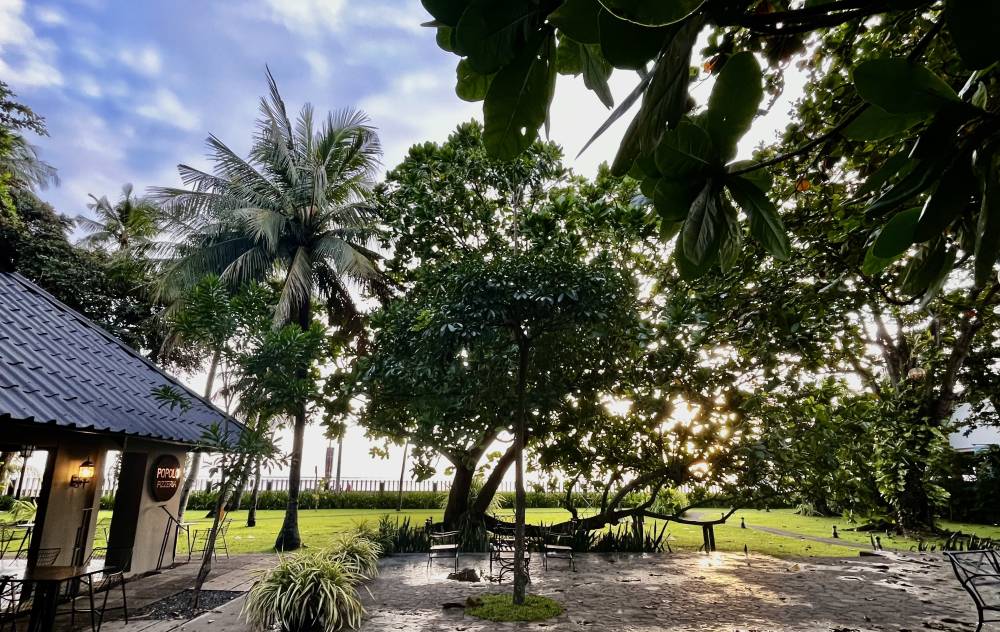
A landscape that evokes emotion and nostalgia for the past does not necessarily have to be manicured and structured. It looks as if the native plants just germinated and grew.
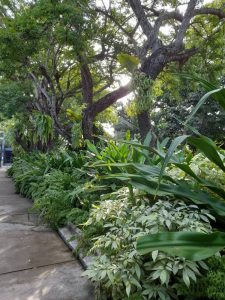
Before the pandemic, gallerist and entrepreneur Jaime Ponce de Leon acquired and renovated an abandoned mid-century resort in his home province in Negros Oriental. Now managed by hotel developer Henry Lee, it is known as a landmark, The Henry Resort Dumaguete. The architectural firm Polygon retained what it could from the original structure. The architect maneuvered the way you would walk around the property, keeping the villas, conservatory and restaurants from showing themselves in their entirety until the magic appears.
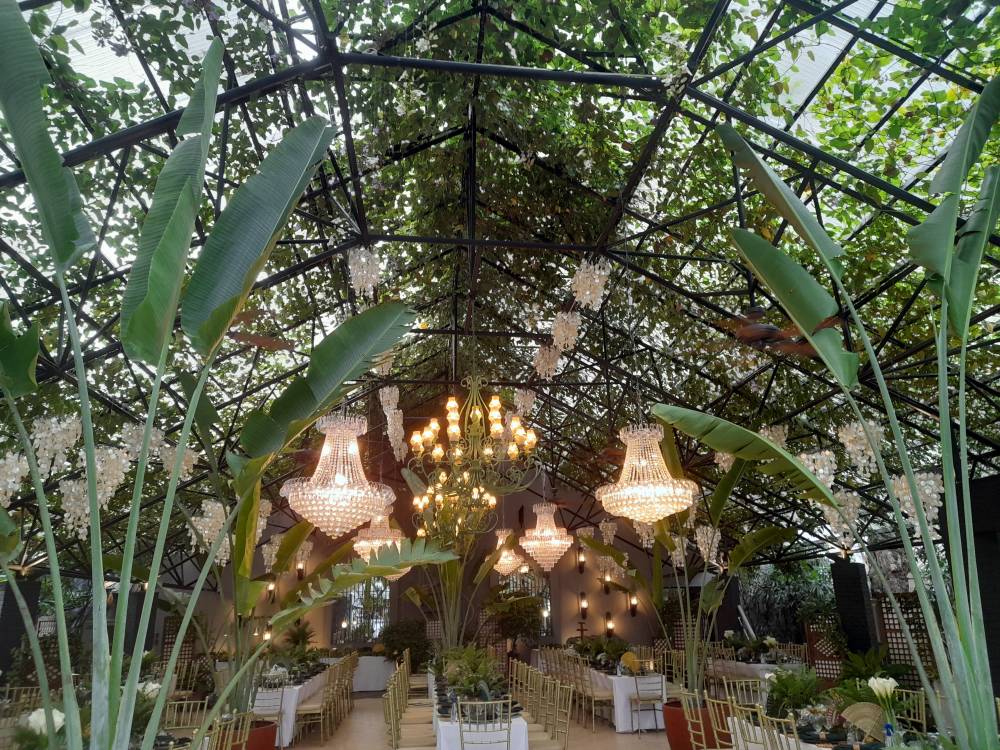
Pathways connecting the villas and amenities become more engaging through the arrangement of the routes. One path leads you to the Oriental-inspired gate that hides the villas from the public eye. The pathways, made with pebble wash and araal stones, blend seamlessly with the forest-like environment.
Bubble effect
Landscape designer Alan Tan retained the endemic trees such as the star apple, mango and santol and the neem trees that lined the driveway. More trees such as the palms, tropical almond (talisay), medicinal and flowering trees were planted to provide shade and buffer the noise of the city.The wide canopies of trees throughout the site created a bubble effect. You wouldn’t think that the resort was in a commercial area and close to the airport.
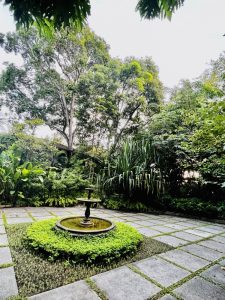
Tan’s client requested flowering trees such as champaca, ilang-ilang and orange jessamine (kamuning) that gave off refreshing scents.
Tan introduced large-leafed philodendrons, monsteras and 70-year-old frangipani trees from Valencia to add drama. Huge taro leaves and alocasias that were abundant in a barangay near the resort were transplanted to the property.
“I left tall trees at the back along with the shrubs and giant pandanuses. I didn’t expect them to grow very tall but they came out nice. I planted a pandan beside the molave tree and calatheas for a tropical look,” he says.
The courtyard was made of recycled debris and excess from the construction. “Instead of throwing them away, I used them to raise the main garden and the rubble to elevate the back of the reception,” he says. Tan lined the floor with locally sourced araal stone while preserving an existing botong tree which provided shade.
One of the most photographed sites, the conservatory was renovated with metal tubes and polycarbonate. Tan installed wires for a trellis effect. Thunbergias or clockvines quickly covered the ceiling, leaving a cascade of flowers with healing properties.
Enhanced dining experience
Unlike other resorts, The Henry has eight specialty restaurants catering to the local market. The dining experience is enhanced by elegant, sculptural plants such as gingers, peace lilies and aglaonemas which, according to feng shui, bring good luck. Around the dining spaces and back of the resort facing the seaside, the area is carpeted with grass and lined with botong, coastal trees and seagrape trees that were popular in the late 20th century.
To augment the privacy around the villas, Tan surrounded the windows with shady plants, luxurious foliage, orange jessamines and heliconias.
While most of the plants were left to grow “wildly,” the conocarpus hedges along the poolside were the only ones that needed trimming.
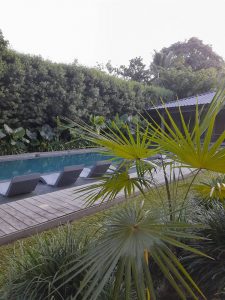
“I wasn’t thinking of patterns when doing the landscape,” Tan says. “I based the plantings and groupings according to texture, color and play of heights. People ask, why does the garden look unstudied? There are pockets of greenery and islands of arrangements. Most of the plants are endemic. Crinum lilies, ironwood trees (bantolinao) and pandakaki grow along the coast. We hung staghorn ferns on neem trees.”
Tan grew up with a green thumb. To follow his passion, he studied agribusiness with horticulture and garden courses at the University of the Philippines Los Baños. He took up elective courses in landscaping and learned the fundamentals of garden layout, types of plants and hardscape.
“YouTube didn’t exist then. You learn which plants grow best in certain conditions, how to create a garden without too much trimming, all by experience. The good thing about The Henry Resort Dumaguete is that the landscape is low maintenance,” he says. —CONTRIBUTED INQ









